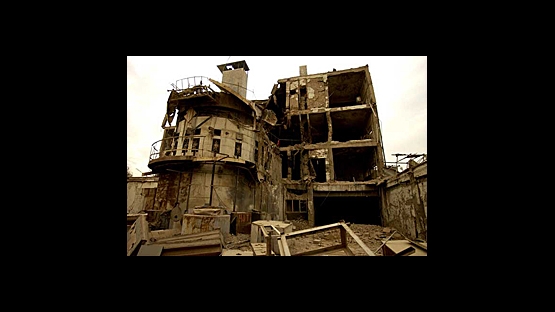Some 1000 Iraqi men, women and children in a village near the former Tuwaitha nuclear site are living inside an area contaminated by radioactive residues and ruins. A project to clean-up the site, and other contaminated facilities in Iraq, was kick-started earlier this year at IAEA headquarters.
Inhabitants of the Ishtar village, based within the Tuwaitha site boundary, some 20 kilometres south of Baghdad, are living in an area where levels of radiation are known to be higher than normal and prolonged exposure could prove risky over time. US authorities have supplied the IAEA with photographs of the Tuwaitha reactor that show crumbling facades and interiors of rubble, spray-painted with warnings like "radioactive" and "HOT". (See Photo Essay).
Once at the heart of Iraq´s nuclear programme, the Tuwaitha complex was inspected and largely dismantled during IAEA-led weapons inspections in the 1990s and subsequently bombed in the 2003 war. It is one of a number of sites in the country identified as needing decommissioning or remediation where radioactive material was used or waste are buried.
The Iraqi Government has requested the IAEA´s assistance to prepare plans and programmes to decommission contaminated facilities in the country. The project´s groundwork was set at an IAEA meeting in Vienna in February 2006, attended by the Iraqi Minister for Science and Technology, representatives from sixteen countries, including the US, and the European Commission.
"This is a huge task, one that could take many years," says Mr. Dennis Reisenweaver, the IAEA safety expert in charge of the effort. Among the first steps is to identify, cordon off, and prioritise contaminated areas that pose the most risk to the public.
Some of the challenges facing the clean-up effort include determining now unknown locations where contaminated equipment and materials might be buried, and recovering lost records about the contents of radioactive materials stored in waste containers.
"Given the magnitude of the task ahead, the project needs to be carried out through a combined effort between Iraq organizations and the IAEA´s Member States," Mr. Reisenweaver says.
Background: The Tuwaitha facility was looted in 2003, making media headlines in April shortly after the war broke out, when barrels containing low-level uranium ore concentrate known as "yellowcake" were stolen. The barrels were emptied and sold to local people who used them for storing water or food, or to wash clothes. Under its nuclear safeguards agreement with Iraq, the IAEA inspected the site, reporting its findings in July 2003. The report noted that the missing material posed no proliferation concern and that efforts were required to recover the dispersed material.
Initial efforts by Iraqi and US teams to collect environmental and radiological data have already started, as have studies on the health effects for people living in Ishtar village. During the project´s first phase, it is expected the IAEA will assist with training, equipment and analysis of data to prioritise sites and facilities that need to be decommissioned first on radiation safety grounds.
The IAEA also is assisting Iraq in several areas related to radiation safety and waste management. They include regional technical cooperation projects to upgrade capabilities for controlling radiation sources and responding to radiation emergencies. See Story Resources for related information.


